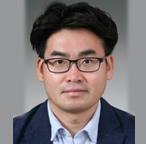Invited Speaker---Dr. Chang-Jun Bae

Senior Research Scientist, Korea Institute of Materials Science (KIMS), South Korea
Biography: Dr. Bae is a senior scientist in Korea Institute of Materials Science (KIMS), which is a government funded research institute. Prior to joining to KIMS, Dr. Bae was a research scientist at Palo Alto Research Center (PARC), located in Silicon Valley, Post-doctor at MIT, and Ph. D at University of Michigan , developing new ways of manipulating the properties of ceramic active materials. His previous research achievements of additive manufacturing (AM) and Li-ion battery were featured on the several media: Economist, MIT Tehnology Review, Ceramic Tech Today. He is authors on 40 journal publications and isssued and pending patent application for Addtitive Manufacturing and Li-ion battery.
Speech Title: Ceramic 3D printing applied to investment casting molds
Abstract: Superalloy airfoils are produced by investment casting, which use ceramic cores and wax patterns with ceramic shell molds. As an alternative for small production runs or designs too complex for conventional cores and patterns, we use ceramic stereolithography (CerSLA). CerSLA is an extension of the standard RP process of stereolithography, using a photopolymerizable suspension of ceramic powders. Using the layer-by-layer growth enabled by CerSLA, it is possible to eliminate the pattern and produce a one-piece mold integrated with the core, or an Integrally Cored Ceramic Investment Casting Mold (ICCM). We report on the nature and properties of the photopolymerizable suspension for refractory silica powders, the build parameters (layer thickness, laser write style, etc), and the processing steps after CerSLA fabrication (draining, binder removal, sintering). Examples of complex ICCM shapes are presented, with data on accuracy and reproducibility. Progress with superalloy casting in the ICCM will be briefly discussed.
Keywords: Ceramic 3D Printing, Free radical polymerization, Investment casting



